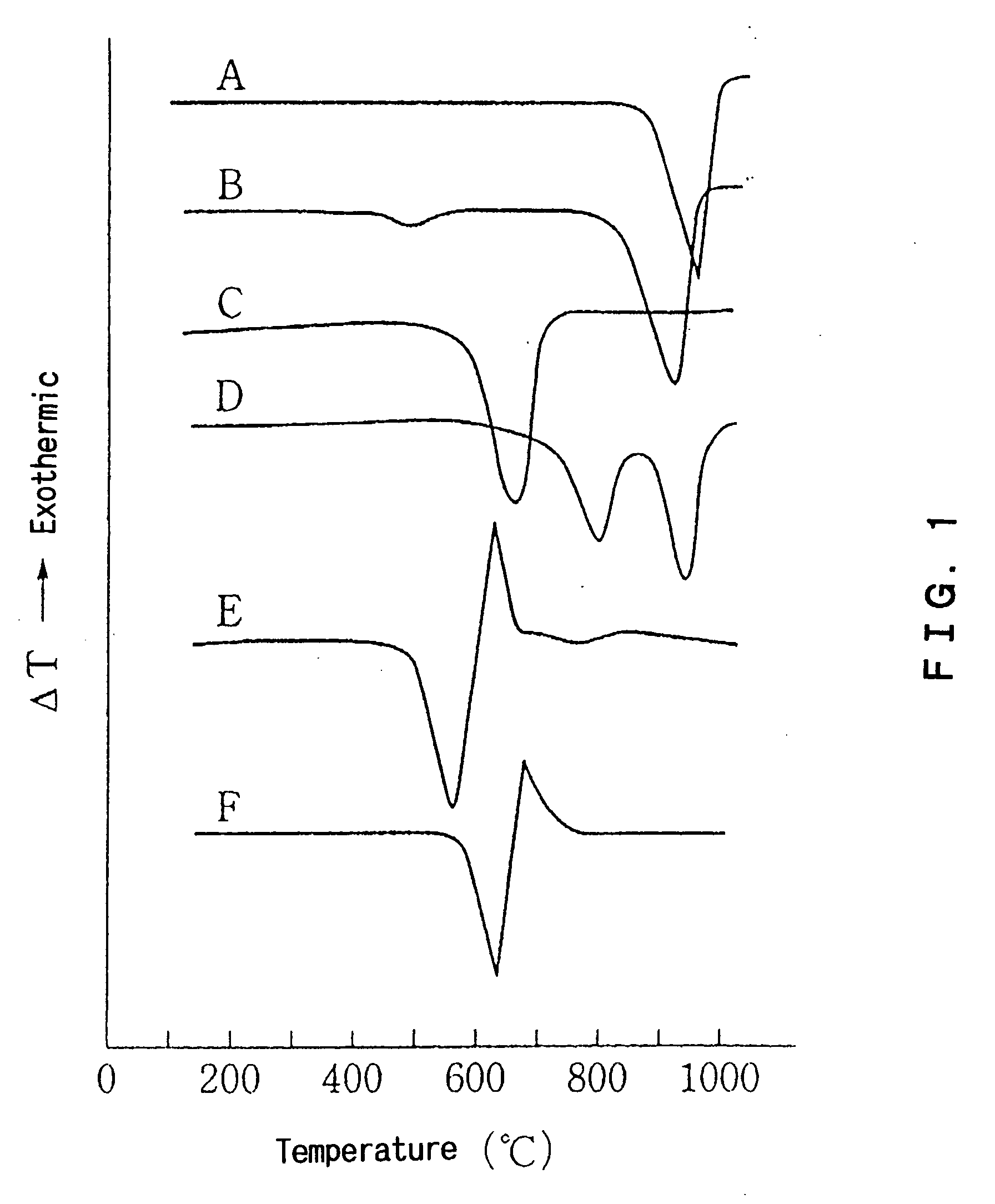Additive for plastic and plastic
a technology of additives and plastics, applied in the field of additives for plastics, can solve the problems of difficult (substantially impossible) to impart hydrogen chloride scavenging properties and antimicrobial properties, and achieve the effect of improving the antimicrobial properties and the antimicrobial properties
- Summary
- Abstract
- Description
- Claims
- Application Information
AI Technical Summary
Benefits of technology
Problems solved by technology
Method used
Image
Examples
example 1
[0090] A dolomite mined in Japan was calcined and slaked to obtain an additive for a plastic (hereinafter abbreviated to an additive) as fine particles. The raw dolomite contains calcium carbonate in an amount of 31 to 35% by weight expressed in terms of calcium oxide based on a dolomite unit weight, magnesium carbonate in an amount of 17 to 20% by weight expressed in terms of magnesium oxide based on a dolomite unit weight, and an ignition loss component in an amount of 44 to 47% by weight based on a dolomite unit weight. Regarding an endothermic peak by the differential thermal analysis of the raw dolomite, both of endothermic peaks in the first and second stages were in a general temperature range of an endothermic peak of the dolomite mined in Japan.
[0091] Three kinds of an additive a, an additive b and an additive c in the form of fine particles were produced by controlling the conditions of calcination and slaking of the dolomite. The dolomite was calcined at a calcination te...
example 2
[0095] A soft polyvinyl chloride resin was prepared by incorporating 73 parts by weight of dioctyl phthalate as a plasticizer and 1.8 parts by weight of a stabilizer in 100 parts by weight of a polyvinyl chloride resin. Samples 2, 3 and 4 were made by adding 70 parts by weight, 100 parts by weight and 140 parts by weight of the additive a prepared in Example 1 in the form of fine particles to 100 parts by weight of the soft polyvinyl chloride resin.
[0096] 0.5 g of each sample was placed in a tubular electric furnace at a furnace temperature of 350° C. and, after 10 minutes, the furnace temperature was raised to 700° C. and the sample was combusted while maintaining the same temperature for 30 minutes.
[0097] A combustion gas discharged from the sample in the tubular electric furnace was transferred into a bubbling bottle through a conduit, where the combustion gas was absorbed into an alkali solution of a 0.2 N sodium hydroxide solution in the bottle. The aqueous alkali solution wa...
example 3
[0102] Using the additive b and the additive c of Example 1 in the form of fine particles, the same test as in Example 2 was conducted. As a result, as the amount of fine particles to be incorporated in a polyvinyl chloride resin increased, a hydrogen chloride scavenging ratio increased and reached 90% or more when the amount is about 100 parts by weight.
PUM
| Property | Measurement | Unit |
|---|---|---|
| Temperature | aaaaa | aaaaa |
| Temperature | aaaaa | aaaaa |
| Percent by mass | aaaaa | aaaaa |
Abstract
Description
Claims
Application Information
 Login to View More
Login to View More - R&D
- Intellectual Property
- Life Sciences
- Materials
- Tech Scout
- Unparalleled Data Quality
- Higher Quality Content
- 60% Fewer Hallucinations
Browse by: Latest US Patents, China's latest patents, Technical Efficacy Thesaurus, Application Domain, Technology Topic, Popular Technical Reports.
© 2025 PatSnap. All rights reserved.Legal|Privacy policy|Modern Slavery Act Transparency Statement|Sitemap|About US| Contact US: help@patsnap.com


